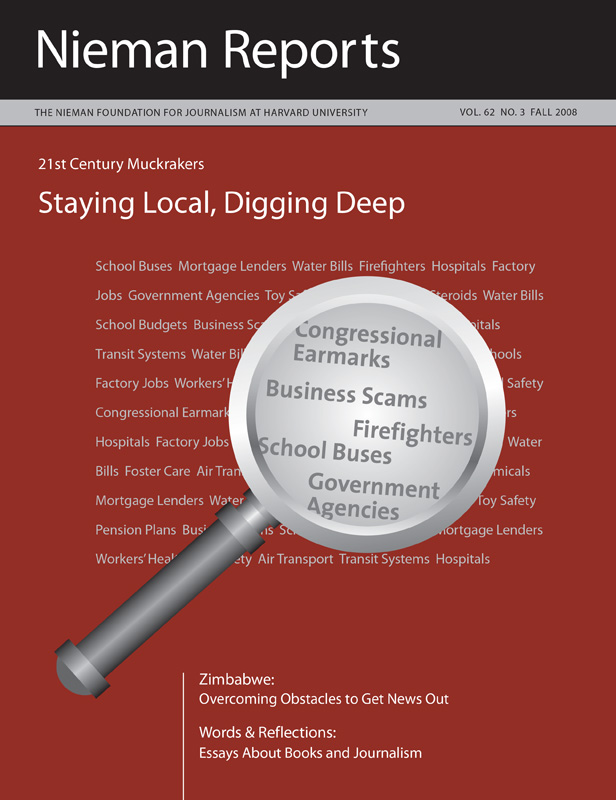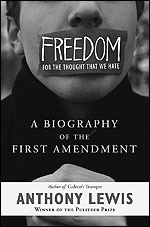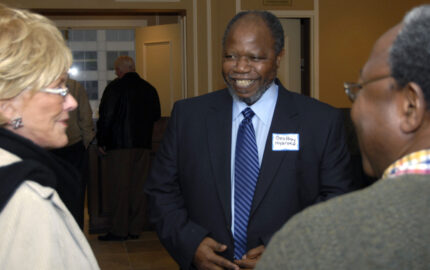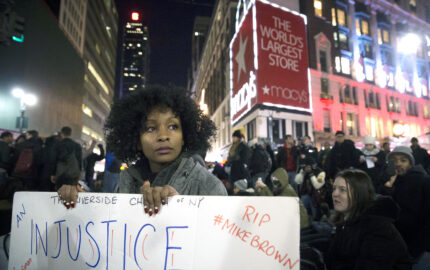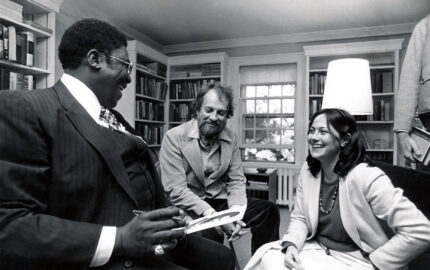As the Nieman Foundation approaches its 70th anniversary, it seems a fair question to ask: Who involved in the program has had the most influence transforming the Nieman idea from “a dubious experiment” to the premier fellowship opportunity that has had such an overriding impact on American—and worldwide—journalism?
Certainly some of the wise and avuncular curators—from Louis Lyons to Howard Simons and Bill Kovach—could stake their claim. There have been dozens of Pulitzer Prize-winning reporters and editors who have gone through the Nieman program. And we shouldn’t forget our overseas colleagues—from South Africa to China to Russia—many of whom have tried to practice our craft in the most repressive and autocratic environments.
Still, my vote would have to go to Anthony Lewis, the former reporter and columnist of The New York Times. Lewis, a member of the Nieman class of 1957, won one Pulitzer Prize before his Nieman year and one after. But his influence on the program stems from his 15 years at Harvard lecturing generations of Nieman Fellows—and Harvard Law School students—on the First Amendment and the role of the press in a democratic society.
Lewis’s understanding of the courts, the legal process, and constitutional law served as a guide not only to those he taught or who read his columns, but journalism students and judges. His book about the watershed First Amendment case of our time, The New York Times Co. v. Sullivan, “Make No Law: The Sullivan Case and the First Amendment,” is perhaps the most important account of the singular case that has transformed modern American journalism.
Now Lewis, who retired from the Times at the end of 2001, has done what many of his generation of journalists are also contemplating—penning a biography. But his is not one of a great political figure or a prominent journalist. Nor is it an autobiography. Instead, Lewis has written what its subtitle calls, “A Biography of the First Amendment.” It is entitled “Freedom for the Thought That We Hate.”
This relatively short First Amendment treatise goes beyond the issue of libel to discuss all of the legal issues facing modern journalists, from invasion of privacy to journalistic privilege, from prior restraints to copyright. It is a cogent, yet complete accounting of some of the most searing issues that have faced journalists over the past decade. Yet to Lewis, unlike The New York Times of the Sullivan case or the Pentagon Papers case, contemporary American journalism has come up short.
The beauty of this book resides in the realization that Lewis is neither a First Amendment absolutist nor is he a knee-jerk Pollyannaish defender of the press. In fact, Lewis chooses to level some of his harshest criticism at journalists—several of whom might actually have been Nieman Fellows:
In the mid-twentieth century, American reporters began drinking white wine. They had college, some even graduate degrees. And their ambitions climbed. They wanted to be in Washington, the center of the world. They wanted to go to dinner parties with the secretary of state. That is a bit of a caricature, but not much. Reporters used to be outsiders, badly paid. Now they, at any rate those in Washington and others among the top in the profession, are part of the establishment, upper-middle class in outlook. They call themselves journalists rather than reporters. There is a danger in all that: the danger of becoming too close to power. It is a palpable danger in Washington. Writing critically about a cabinet member is hard after sitting next to his or her spouse at a dinner table.
Lewis goes on to excoriate the press for its failures in covering the lead up to the Iraq War:
Where was the press in that period? The kindest answer would be: out to lunch. When the government seized two American citizens and detained them without trial as “enemy combatants,” there were brief newspaper stories—with no sense of the constitutional stakes.
According to Lewis, it was only when The New York Times finally published its story disclosing that President Bush had secretly ordered the wiretapping of U.S. citizens’ international phone calls without a warrant that this deferential era ended.
Privilege and Privacy
But while Lewis was willing to laud his former newspaper here, he was also quite willing to criticize it, particularly when the newspaper tried to assert the notion that journalists should have a constitutional privilege not to name their confidential sources. Failing that, most news organizations continue to argue for a federal shield law.
Most journalists are absolutists when it comes to protecting their sources even though nearly 40 years of legal opinions say such a privilege is not absolute. Lewis shows why such a position is untenable, citing the case of Los Alamos scientist Wen Ho Lee, who was accused of committing treason against the United States. Through leaks from government sources, various press accounts detailed accusations that Lee was a Chinese spy. The only problem was that none of it was true, forcing the federal judge handling the case to apologize to him. Lee decided to sue the government for invading his privacy via the press leaks. He subpoenaed reporters from five news organizations, who refused to testify. The news organizations eventually settled by paying Lee $750,000. As Lewis writes:
In settling the case, the news organizations made no apology for their contemptible treatment of Wen Ho Lee. They said they agreed to settle “to protect our journalists from further sanctions” and to protect their ability to obtain information that can come “only from confidential sources.” In other words: We don’t care what we did to Wen Ho Lee; we care only about our needs.
Lewis goes on to point out how a federal shield law could turn out to be a pyrrhic victory for the press:
Suppose that a federal shield law had existed when Wen Ho Lee sued to seek some compensation for his nightmare ordeal. The journalists who wrote the damaging stories would have had their subpoenas dismissed, and without the names of the leakers Lee would probably have had to give up his lawsuit. Is that what a decent society should want? Would that have really benefited the press? Or would it have added to the evident public feeling that the press is arrogant, demanding special treatment?
Lewis’s view of the First Amendment when it comes to journalistic privilege is the same nuanced approach that he takes when it comes to libel. He correctly points out that the Sullivan case “emboldened the press, encouraging it to challenge official truth instead of acting as a mere stenographer.” But some elements of the press also became reckless with these newfound rights, which he thinks in part is what has led to the vulgarization of the public dialogue. More distressing to Lewis are court decisions that expanded the Sullivan protections from public officials to any news subject designated a public figure. This meant that businessmen and actors suddenly had to meet a much tougher—almost impossible—standard to win a libel action. Lewis writes:
The press was pleased that more libel plaintiffs had to bear the heavy burden, but I was and remain unpersuaded. If a supermarket tabloid prints a sensational story about a movie actress, why should she have to meet the same test as a politician if she sues for libel? What does she have to do with what the Sullivan decision called “the central meaning of the First Amendment,” the right to criticize government officials?
Yet, despite his occasional criticism of the modern press, this book is a must-read for all journalists because it clearly and succinctly describes the current state of communications law that affects all of us in this age of the Internet, blogs, online pornography, and routine copyright infringements. As all newsrooms face the current economic uncertainty and the difficulty of covering important stories with fewer resources and fewer journalists, Lewis’s book is an excellent primer on where our rights came from, how they have evolved, and what we must do to keep them.
Joel Kaplan, a 1985 Nieman Fellow, is associate dean for professional graduate studies at the S.I. Newhouse School of Public Communications at Syracuse University.
